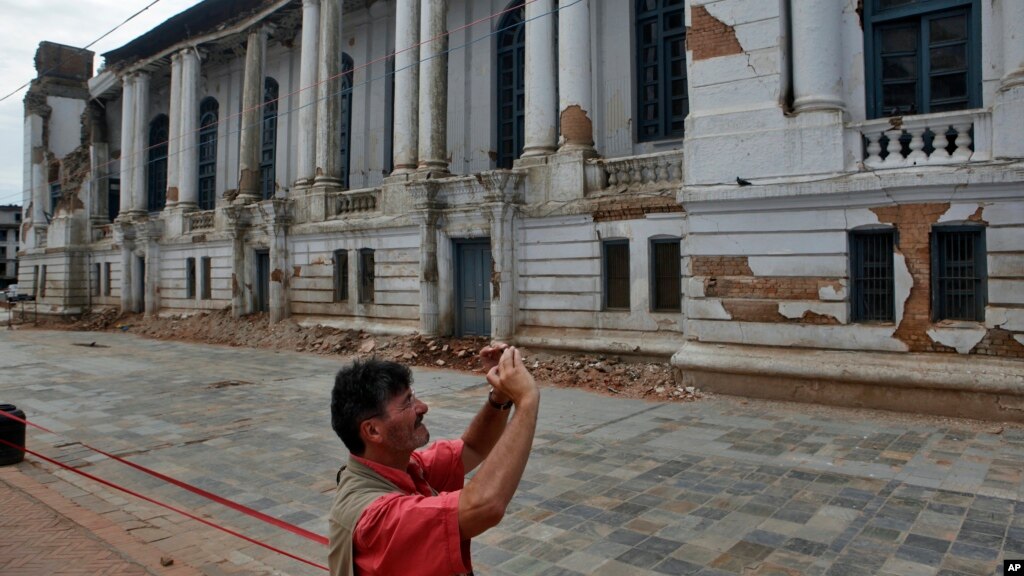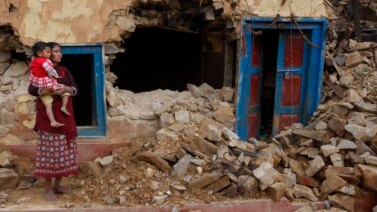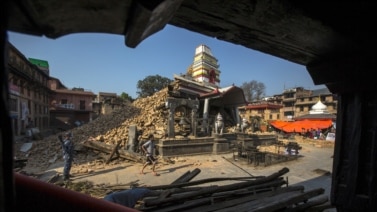
Nepal has reopened its major World Heritage Sites in an effort to get tourists to return. Nepal depends heavily on money spent by overseas visitors. The number of visitors dropped sharply after a major earthquake struck the Himalayan nation on April 25th. The earthquake forced officials to close off severely damaged structures so that workers could remove the wreckage.
Nepalese officials opened many popular heritage sites early Monday. These places include three former “durbar or royal squares” in the cities of Kathmandu, Patan and Bhaktapur. Their centuries-old palaces and historic religious temples once had tens of thousands of visitors, including many tourists from India.
In Bhaktapur, dancers and musicians performed to celebrate the reopening. Tourism Minister Kripasur Sherpa urged people to come to the country for a holiday “to help Nepal rebuild.”
An official with the Nepal Tourist Board, Aditya Baral, says Nepal wants to send a message that the country is safe and wants to host tourists with “renewed enthusiasm.”
However, getting tourists to return may prove difficult. The United Nations Educational, Scientific and Cultural Organization released a statement last week. In it, UNESCO expressed concern over reopening the heritage sites and asked the public to be extra cautious. The organization says that some sites are still at risk -- in a precarious state.
Nepalese officials, however, believe that there are no risks. They say visitors will be given guided tours and only will be permitted to visit safe structures. In some places, they will be given safety helmets for protection.
Those involved in Nepal’s tourism and travel industry say media reports of damage are, in their words, “highly exaggerated.” Reports of damage to roads and other infrastructure and cultural heritage sites have kept tourists away from the country.
Tourism officials say everything from the airport in Kathmandu to most hotels and communication links are operating.
Prasidha Panday is Managing Director of the Shangri-La Hotel in Kathmandu. He says much of the city is back to normal. He sees no reason for visitors to stay away.
The government wants foreigners to return because nearly 500-thousand people depend on earnings from tourism. Now, they are finding it extremely difficult to rebuild their lives as they are left with no livelihood.
Hare Ram Baral is head of the Tourist Guide Association of Nepal, says the situation is hard for thousands of workers with low-paying jobs.
So, the return of Nepal’s tourism industry is important to the country. But there also are concerns about repairing its cultural treasures.
Aditya Baral of the Nepal Tourism Board says it will be a difficult task that could take many years.
UNESCO is leading the effort to repair the damaged heritage structures. Officials estimate the repair work could cost up to $18 million.
I’m Mario Ritter.
Anjana Pasricha reported on this story from New Delhi. Mario Ritter adapted it for VOA Learning English. George Grow edited the story.
Words in This Story
heritage – n. traditions, beliefs or cultural objects (structure in this case) that are part of the history of a group or nation
glittering – adj. shining brightly
cautious – adj. to be careful about avoiding danger or risk
precarious – adj. not safe or strong
livelihood – n. a way to earn money

